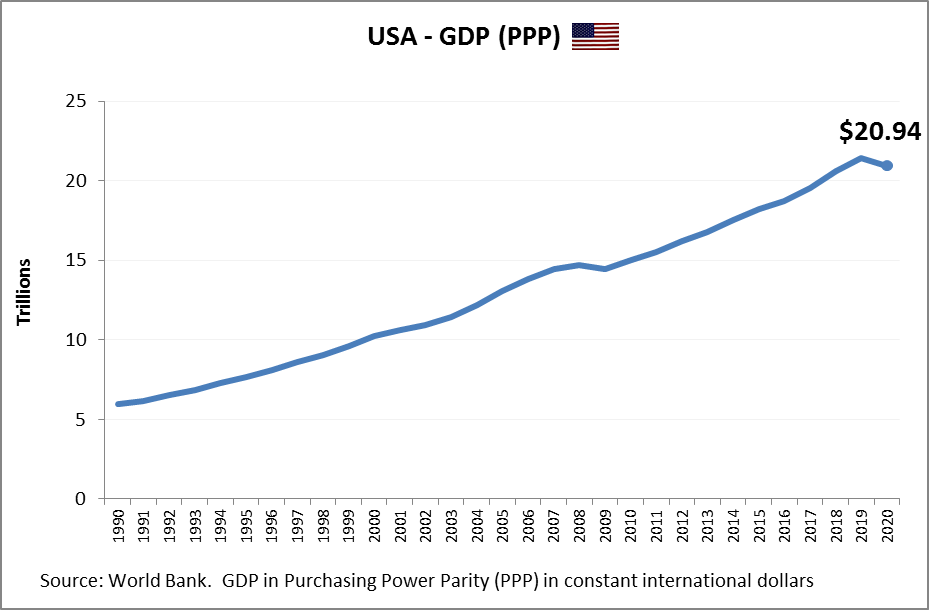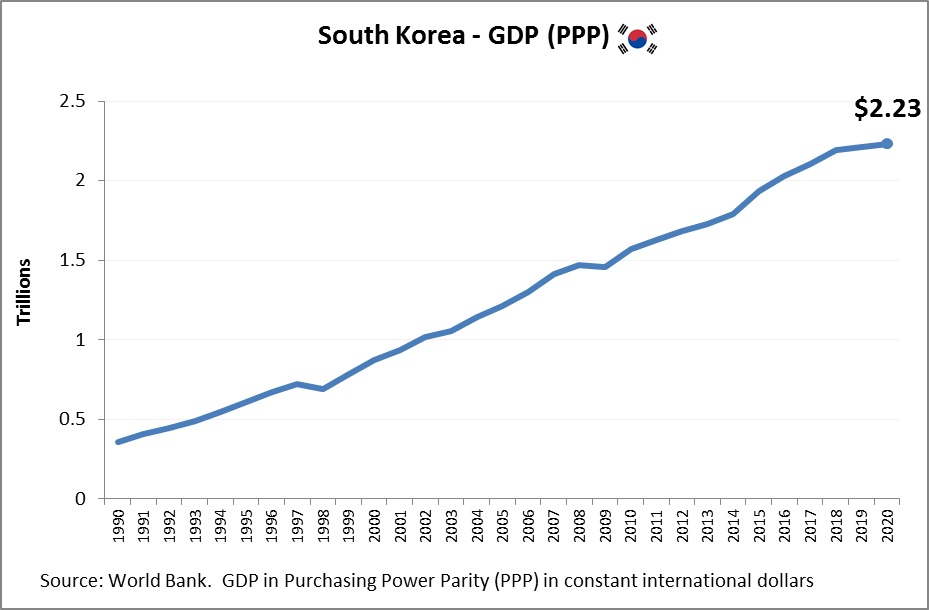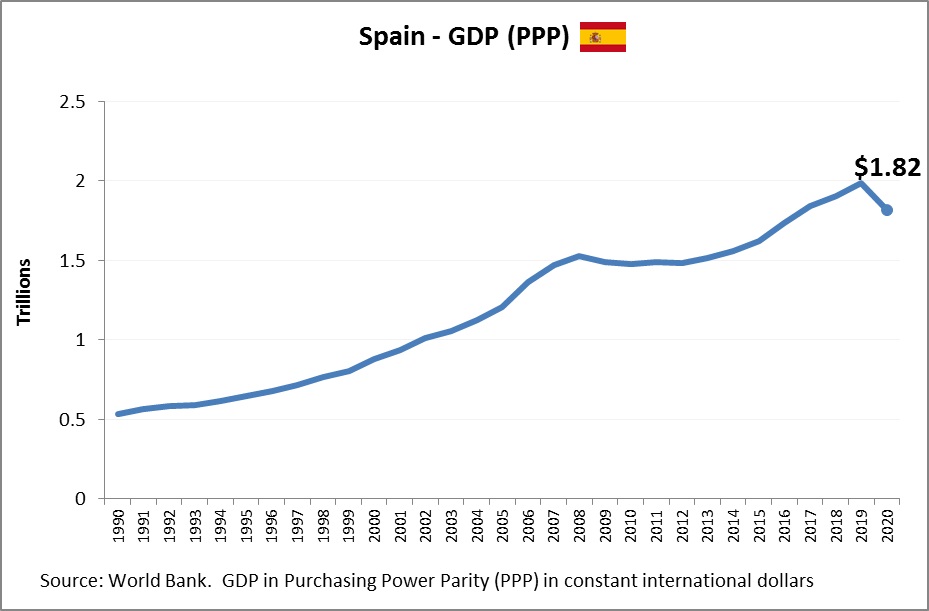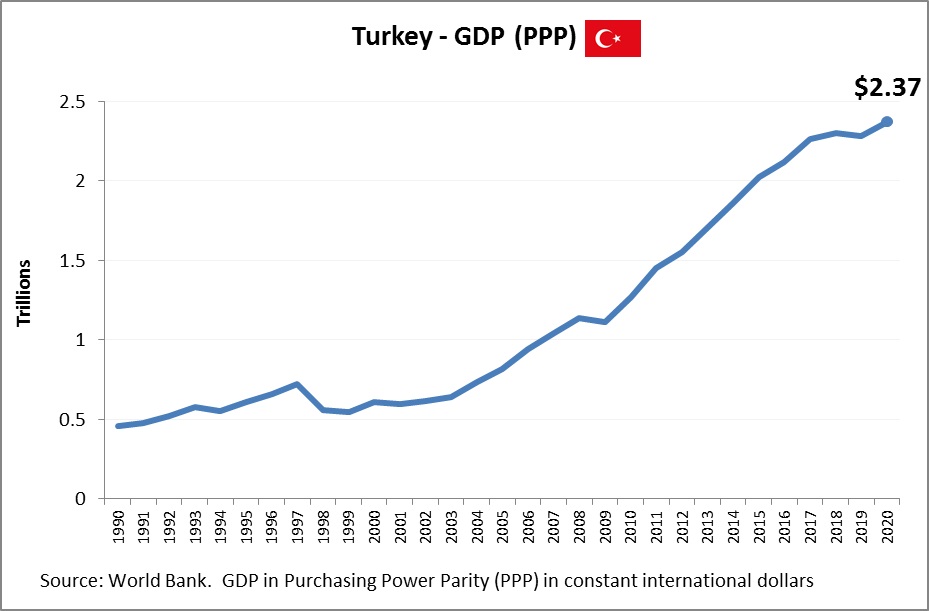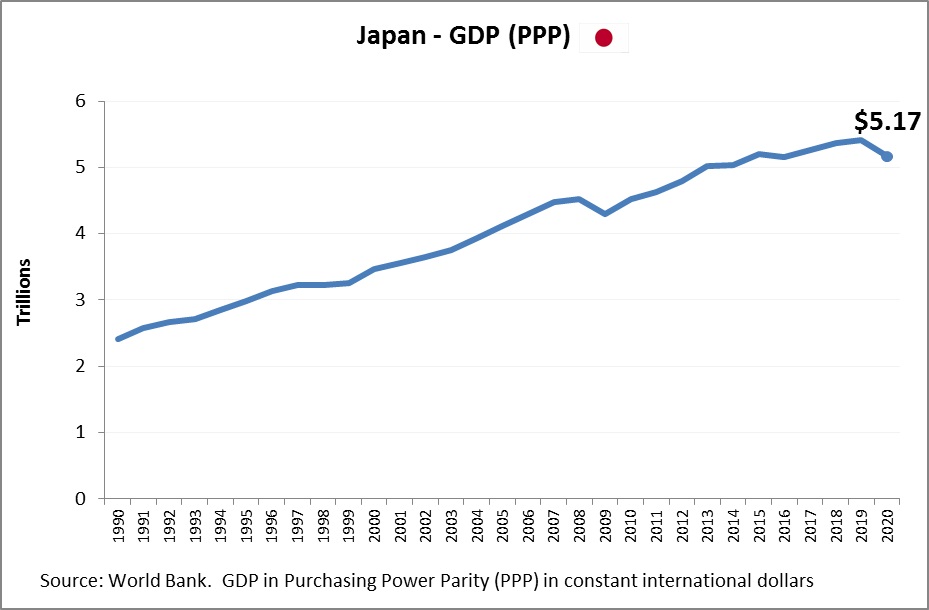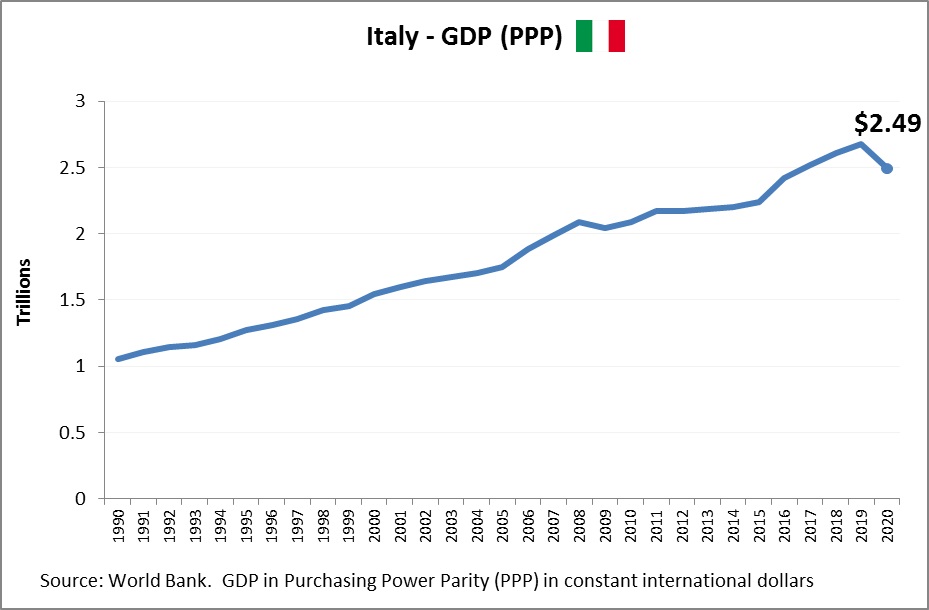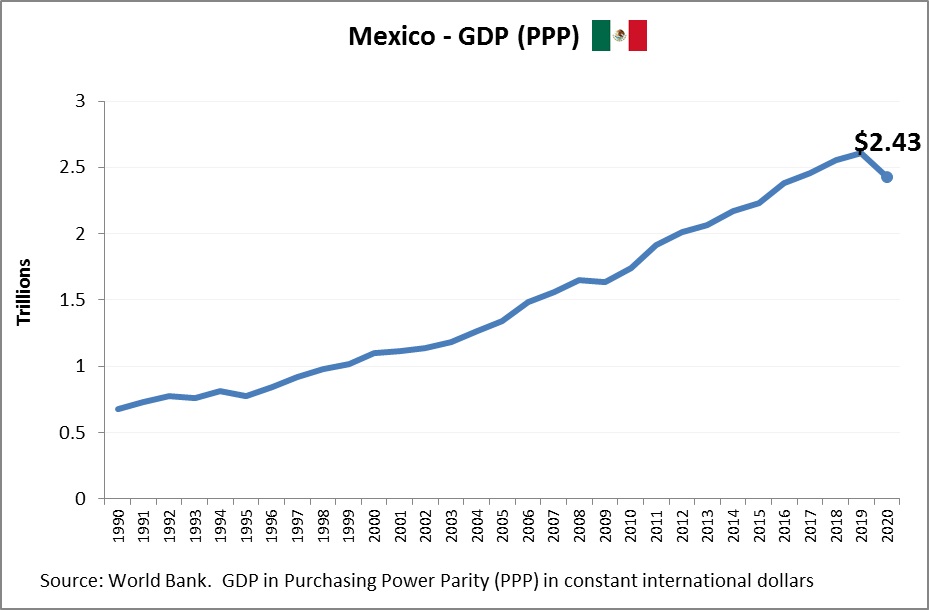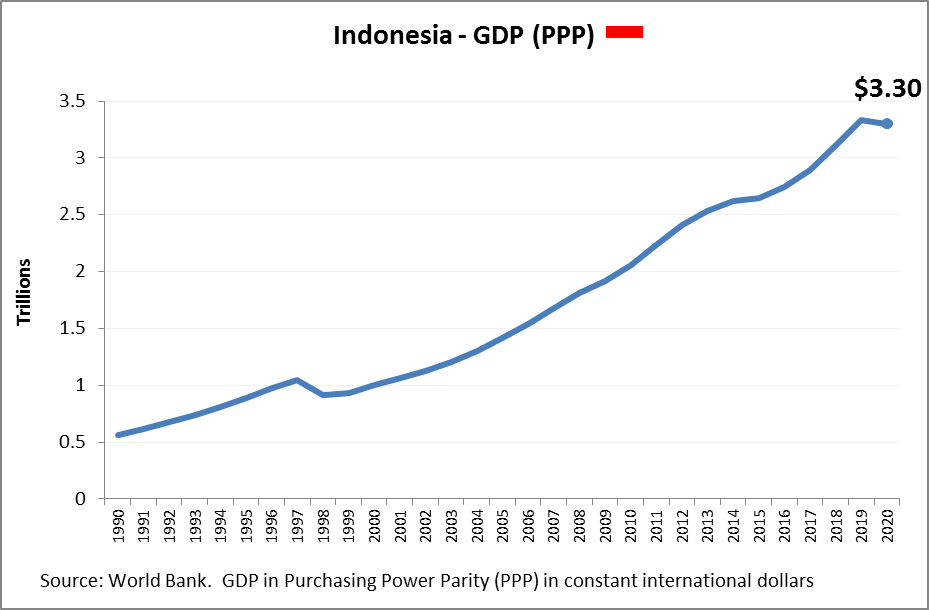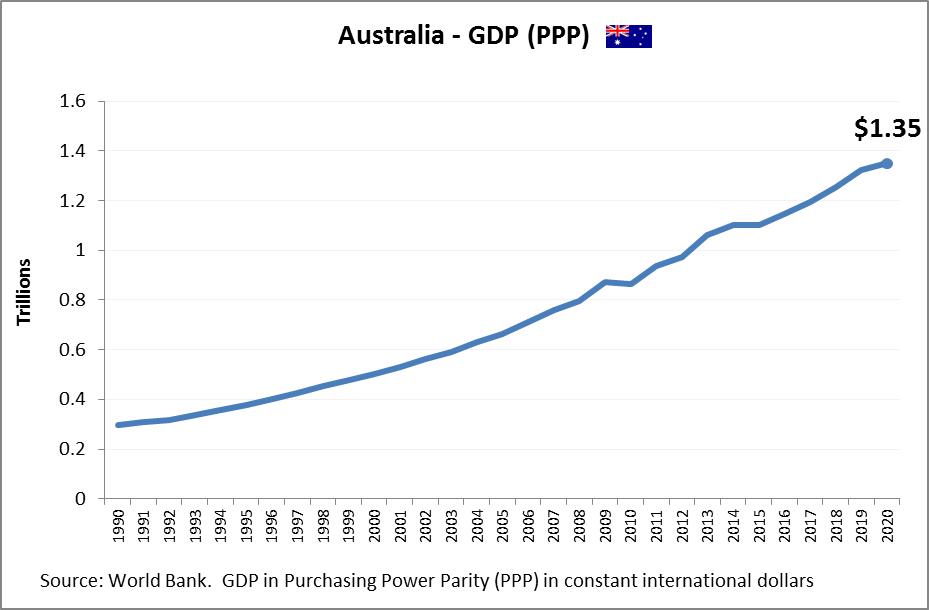USA economy size measured in Power Purchasing Parity, i.e. comparing relative standard of living and ability to afford goods and services. USA’s Gross Domestic Product (GDP) chart showing historical economic growth as measured in PPP international dollars.
USA: The United States has the worlds second-highest GDP based on PPP (after China), underscoring its immense economic output across virtually every sector, from technology and finance to manufacturing and energy. In terms of GDP PPP per capita, the U.S. ranks very high, reflecting widespread individual consumption, innovation, and a robust labor market. The American economy benefits from strong productivity, deep capital markets, and a large, affluent population. However, disparities in income, healthcare access, and regional development persist, even as the U.S. remains a global leader in overall and per capita economic power.
